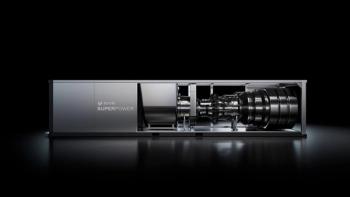
Benefits of using a VFD in rotary screw air compressors
This is the first part of a series that discusses how VFD technology has become a common feature in compressors where the focus is on production efficiency and energy savings.
It is difficult to imagine today’s world without pressurized air from air compressors. Pressurized air is one of the most common raw materials required for countless functions in a modern society.
Factories, stores, homes, warehouses, mobile tools, construction, hospitals; oil/gas production and pipeline applications, pharmaceuticals, and food processing are all examples of places where air compressors are needed.
Variable frequency drive (VFD) technology was used sparingly in compressors for many years. Today, as more attention is being focused on production efficiencies and energy savings, VFD’s operating variable speed compressors have become much more common. There are many advantages to using a VFD in rotary screw compressors. Either used as the compressor controller –or applied in conjunction with a proprietary air compressor controller, VFD’s can alter speed, maximize production efficiency, alleviate mechanical resonances and ride through power problems, and save countless dollars in wasted energy costs. Before reviewing some of the general concepts and advantages, it is important to briefly review rotary screw compressors.
Rotary screw compressors
A compressor is a mechanical device that increases the pressure of a gas by decreasing the volume of that gas. A rotary screw compressor is a type of gas compressor which uses a rotary type positive displacement mechanism. Rotary compressors use two meshed helical gears running in constant motion and are either oil free or oiled. In simpler terms, the two helical gears or ‘rotors’ turn and bring air between them as they are in constant motion. One end is an inlet where the air enters the compressor; the other is an outlet end where the compressed air exits out of the gears. When the air enters, it is squeezed through the gears and forced into compression. It then exits out the other side as compressed air.
In rotary screw compressors, the gear noise is lower than other types of compression mechanisms (such as reciprocal compressors). Although still a positive displace type of compressor, the temperature increase of the gas during the helical screw compression is far less than the temperature of a piston reciprocal compressor as well. Rotary screw compressors can operate both with oil and oil free and there are benefits to both. As opposed to some reciprocal designs, most of the mechanical portions of the equipment are air cooled. More often than not, electrical controls can exist as a part of a main frame or skid along with the compressor and will not need special cooling beyond air flow. The efficiency of this equipment depends greatly on the oil seal created between the gears if the device is oiled, or the use of timing gears for an oil free design.
Rotary Screw Compressors are commonly used to replace reciprocal or piston compressors where large volumes of high pressure air are needed. The gas compression process of a rotary screw is a continuous sweeping motion, so there is very little pulsation or spill-back, as occurs with piston compressors. There is no source of friction or large inertia to overcome, so a rotary screw compressor does not have a high level of overload requirements.
When VFDs are sized for rotary screw compressors, they are not de-rated. However, many rotary screw compressor motors are sized to operate in their service factor range when the compressor is running at 100% duty. Variable speed rotary screw compressors do not operate at 100% capacity for long periods due to the storage tanks and VFD controls. Like reciprocal compressors, rotary screw compressors can be lined into multi stage systems to achieve higher PSI requirements.
Oil vs. oil free rotary screw compressors
In an oil rotary screw compressor, the oil performs two vital functions. The first is to act as a cooling agent for the gears and the rest of the mechanical system. The second function is to provide an oil seal along the helical gear edges to ensure there is no release of pressure during operation. This will also guarantee the proper direction of air flow along the gears. Using the oil as a seal eliminates the need for timing gears along the shaft of the compressor. The oil is removed from the system using a separator or filter system.
(Diagram of typical oil rotary screw compressor. Source: Internet)
An oil free compressor has to use another medium (typically forced air) to maintain cool mechanics. It also requires the use of timing gears along with the helical gears to maintain proper alignment of the system to guarantee proper air flow and compression. Cooling jackets (closed systems) are sometimes used on oil free designs depending on heat requirements. A cooling or water jacket is a water system that cycles water through a covering or jacket to remove heat. There is usually a radiator system to further remove heat. There is little difference in outside appearance between oil and oil free compressor. Although filtering is required for an oil and oil free system, oil free systems do not have separators. Therefore, if looking at a typical rotary screw compressor skid, look for an oil separator to determine if it is oil free variant.
In the next part of this series, the author talks about the advantages of VFDs on variable speed rotary screw compressors.
(The author is Industrial Drives OEM Sales Manager, Yaskawa America, Inc.)
Newsletter
Power your knowledge with the latest in turbine technology, engineering advances, and energy solutions—subscribe to Turbomachinery International today.




